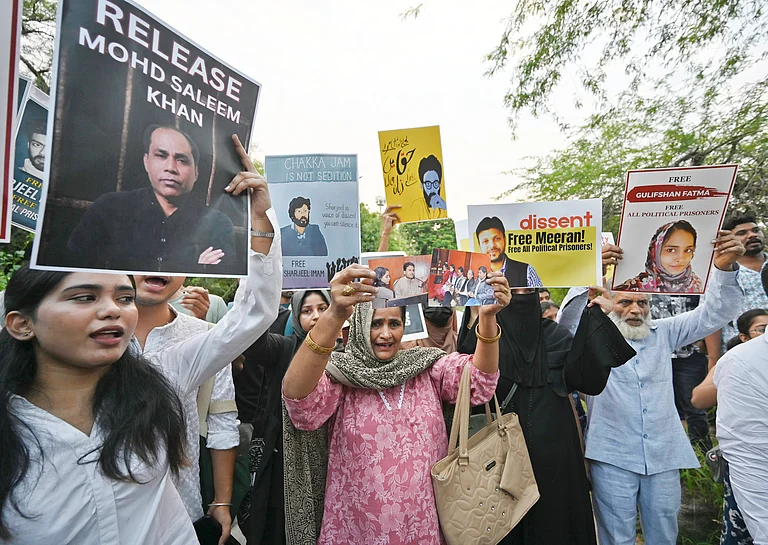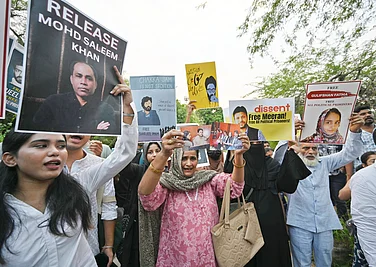On May 26, 2006, a tragic incident occurred in Pathanamthitta, Kerala, where Ramadevi, a 50-year-old mother of two, was murdered in her own home. As is often the case, suspicion initially fell on a migrant worker residing in the area. The general consensus, including the police, pointed fingers at Chudala Muthu, a migrant worker from Tamil Nadu, as the perpetrator, with the assumed motive being robbery. Adding to the doubt was Muthu's sudden and unexplained absence from the area since the day after the murder, which drew the full attention of the police. However, he managed to elude capture.
As Kerala is a politically vibrant civil society, it is usual for the local community to form an action council in the event of a serious crime. In this case, an action council was established, public meetings were held, and representations were submitted, all demanding the apprehension of the murderer.
A year later, Janardanan Nair, the retired postmaster and husband of Ramadevi, approached the High Court seeking justice for his wife's murder. Responding to his plea, the High Court instructed the State Crime Branch to take charge of the investigation into Ramadevi's death.
Sixteen years elapsed, and Chudala Muthu, the prime suspect, remained elusive. His whereabouts remained unknown, and the case gradually faded from public memory as if the tragic event had never occurred and Ramadevi's killer had never been at large. Over the course of 17 years, 14 different teams from the Crime Branch investigated the matter. However, it was the 15th team, led by Inspector Sunil Raj, that eventually made a breakthrough.
To everyone's astonishment, Jananrdanan Nair, the husband of Ramadevi, was apprehended and arrested for his wife's murder. The Crime Branch officer revealed that the forensic analysis of the hair found under the deceased's nails matched that of Janardanan Nair. This crucial piece of evidence had been collected during the initial inquest and subsequently sent for scientific examination. The results were obtained a few months later, but despite this significant discovery, the police had struggled to make any headway in the case. The mystery surrounding the murder remained intact.
What caused such a lengthy delay in solving the case? The Crime Branch provides insight into the unfolding story, as shared by the team leader, Sunil Raj, in an interview with Outlook.
"It was a case of judgment error and negligence," says Sunil Raj. "We are currently investigating and will submit a report on why the previous investigators failed to crack the case and who was responsible for their shortcomings."
According to Raj, the initial investigators were misled by the circumstances surrounding the case, with Chudala Muthu being the primary suspect. Inspector Sunil Raj acknowledges that such hasty assumptions often arise from the prevailing prejudice against impoverished migrant workers in society. Additionally, there were reasons to suspect Muthu. "During our investigation, we discovered that he had a history of womanizing and peeping into washrooms," says Raj. "This led everyone to jump to the conclusion that he may have been responsible for the crime." Raj believes Muthu fled the area out of fear of being falsely accused. The public outcry to "catch Chudala Muthu, the culprit" also limited the scope of the investigation.
Another factor that hindered the investigation was the involvement of Janardanan Nair's brother, who had previously been convicted of murdering his own wife and spent six years in jail. Strangely, he was found dead in the same house and room where Ramadevi was discovered dead one year after her demise. This unexpected development caused confusion among the investigators and diverted their focus away from the right direction, explains Sunil Raj. A case for unnatural death was registered, but not closed yet.
A breakthrough in the investigation occurred when they located the woman who had been living with Chudala Muthu. "We found her in Bangalore earlier this year, and her account of the events completely contradicted what we had previously learned. We became convinced of Chudala Muthu's innocence," says Raj. She had little knowledge of Muthu's whereabouts, as he had left her six months after they departed from the village following Ramadevi's death.
The investigators returned from Bangalore with an entirely new perspective on the case. They re-examined Janardanan Nair's statements in detail and discovered inconsistencies. Nair, now 75 years old, was called in for further questioning, and when confronted with these contradictions, he confessed, according to the police, albeit without much remorse. The forensic examination revealed that the hair found under the deceased's nails matched that of Janardanan Nair. The police, who had been investigating the case for sixteen years, had overlooked this crucial evidence. Sunil Raj, the head of the Crime Branch, does not have a satisfactory explanation for this oversight. "I believe they simply overlooked it because the result came back negative for the brother of Janardanan Nair, who was a suspect. The other suspect, the migrant worker, was on the run. Janardanan Nair was not even on the list of suspects," he explains.
Ramadevi left behind a daughter and a son, neither of whom has shown any interest in finding their mother's murderer, according to Sunil Raj. A confession to the police does not carry weight as evidence under Indian criminal law. Nair will likely plead not guilty in court, and the prosecution will need to establish his guilt. Within two years of Ramadevi's death, Janardanan Nair sold the house where the crime occurred, and the buyer subsequently demolished it, erasing all traces of the crime scene. The forensic evidence and the inconsistencies in Nair's statements, as claimed by the police, are the only factors pointing to his guilt. Will the prosecution be able to establish his guilt beyond reasonable doubt, or will Ramadevi's case join the countless number of women brutally killed by unknown perpetrators? Only time will provide the answers.





















